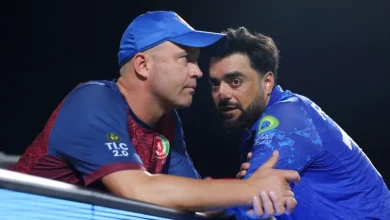Planning your Cup Day look? Maybe pack a brolly and gumboots

Race caller John Tapp remembered the low clouds as having a menacing, almost green look to them.
“It was just after 2pm and hundreds of spectators who’d been gathering on the lawns started to move off in search of shelter,” he later wrote.
“Others stayed where they were, hoping the storm would bypass Flemington. The clouds were low and menacing and appeared more green than black.
“And then the tempest announced its arrival. I’ve never seen rain like it. The noise on the roof was deafening, and I saw a few sheets of galvanised iron sagging under the sheer weight of water.”
It was a long splash back to the mounting yard for the also-rans in ’76.
In the footage from the day, you can see the crowns of water spring up as the horses’ hooves pound the grass.
It took more than a rainstorm to dampen spirits at parties on the lawns at Flemington for the 1976 Melbourne Cup.Credit: The Age Archives
Photos show the mud-caked face of winning jockey Bob Skelton, the phalanx of umbrellas trackside, and the bookies’ gates under a foot of water.
Commentators completely lost sight of the horses as they rounded the final bend, leaving one of them with no choice but to resort to brutal honesty for his audience:
“Don’t know what it is down the extreme outside – it’s completely black – it could be [the racehorse] Perhaps?”
Hines said the last three months of the year tended to be the wettest for Melbourne, so there was always “a slight risk” of rain for attendees of the spring racing carnival.
Historically speaking, weather on Melbourne Cup Day is not without a sense of irony.
In 1968, there wasn’t a drop of rain, and the following year only 0.3mm tickled the gauge at Flemington.
The horse that won the race both those years? Rain Lover.
Start the day with a summary of the day’s most important and interesting stories, analysis and insights. Sign up for our Morning Edition newsletter.





